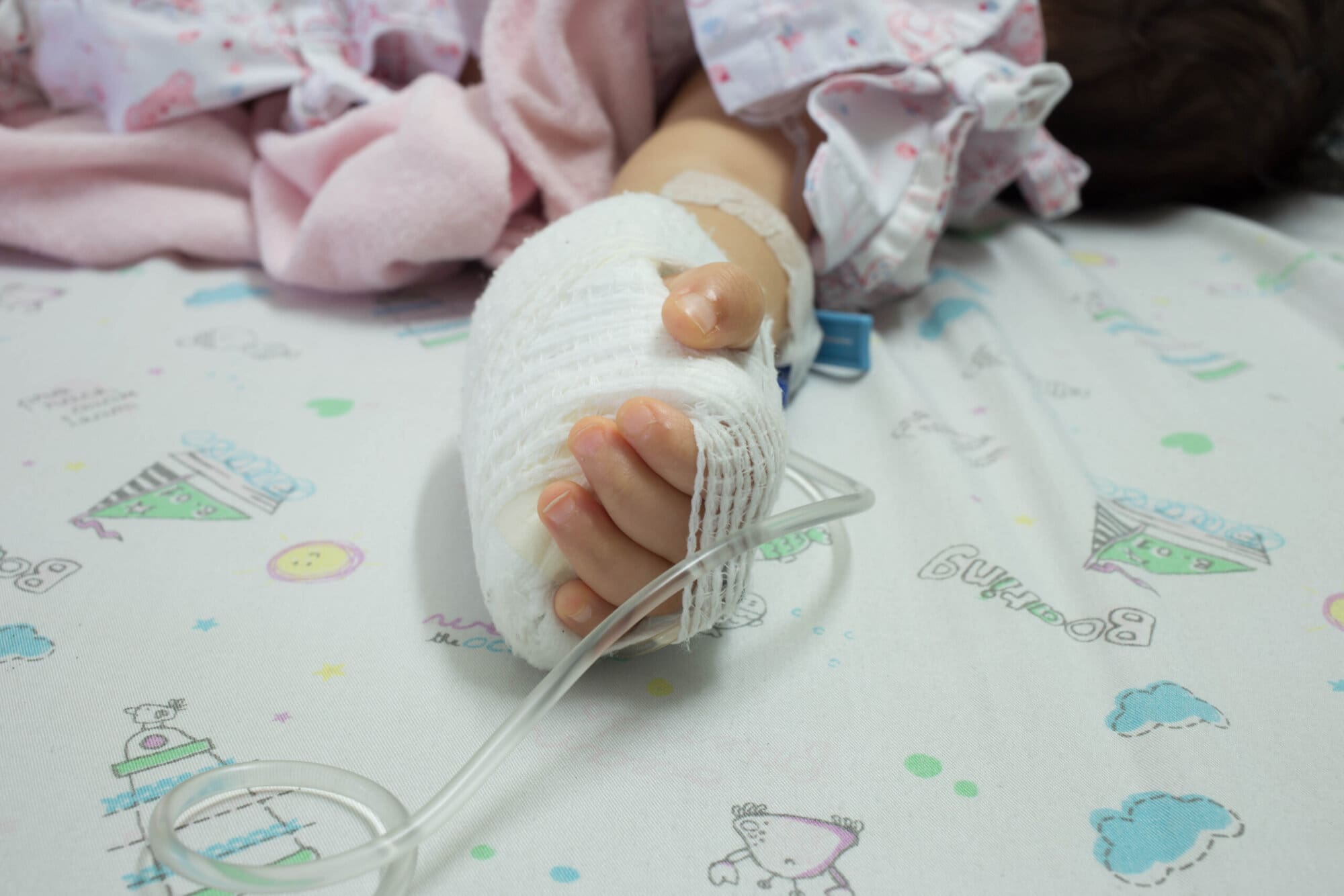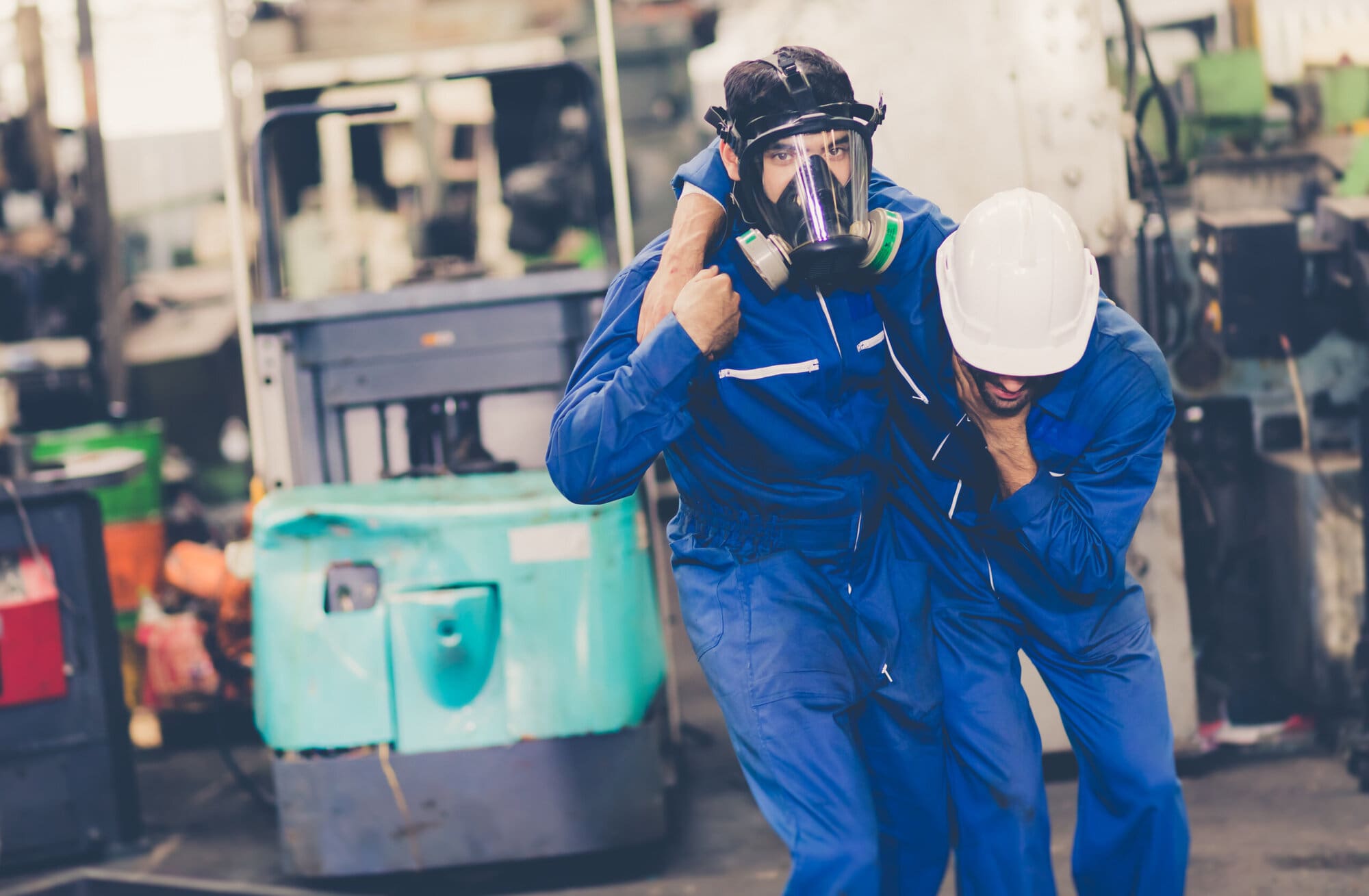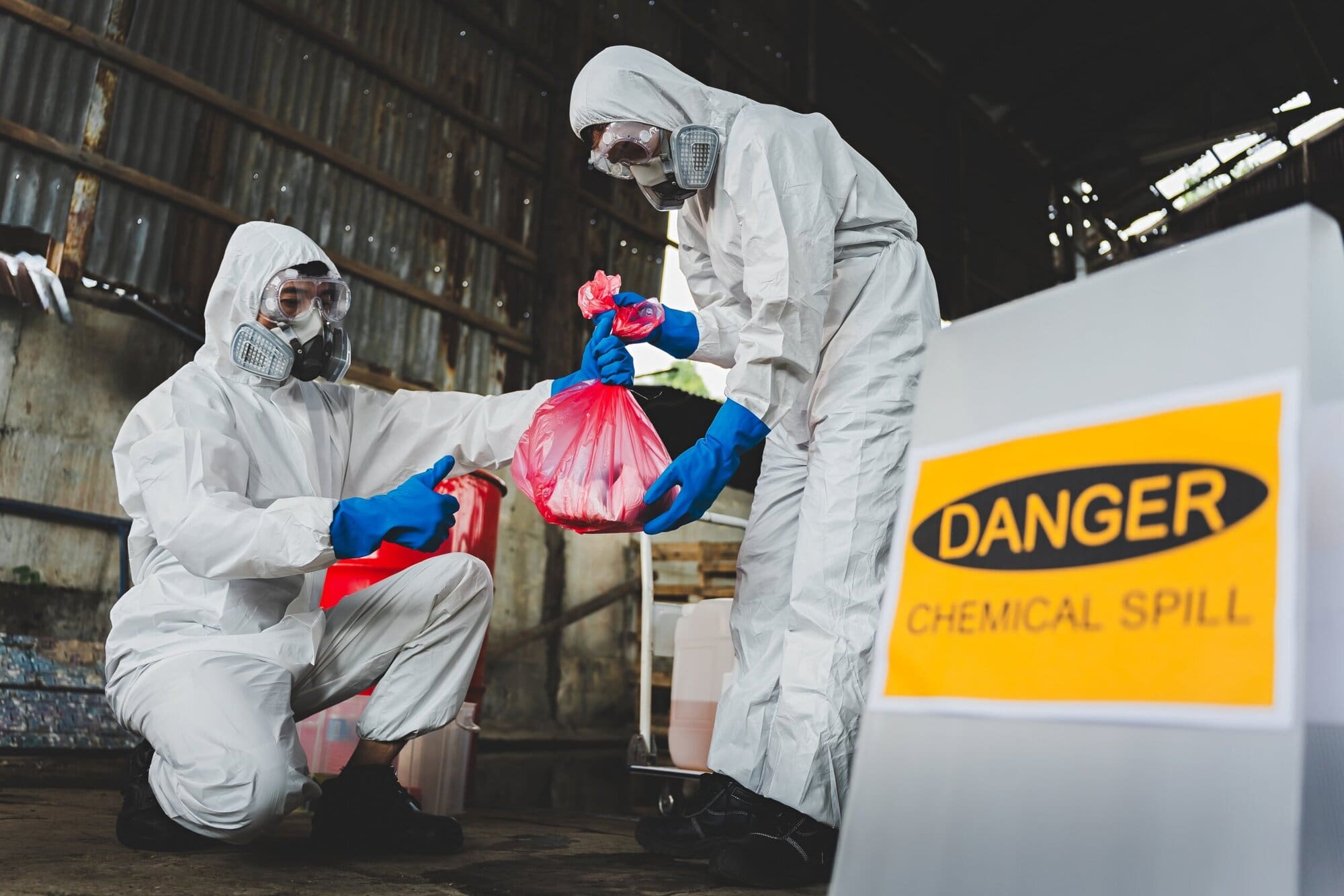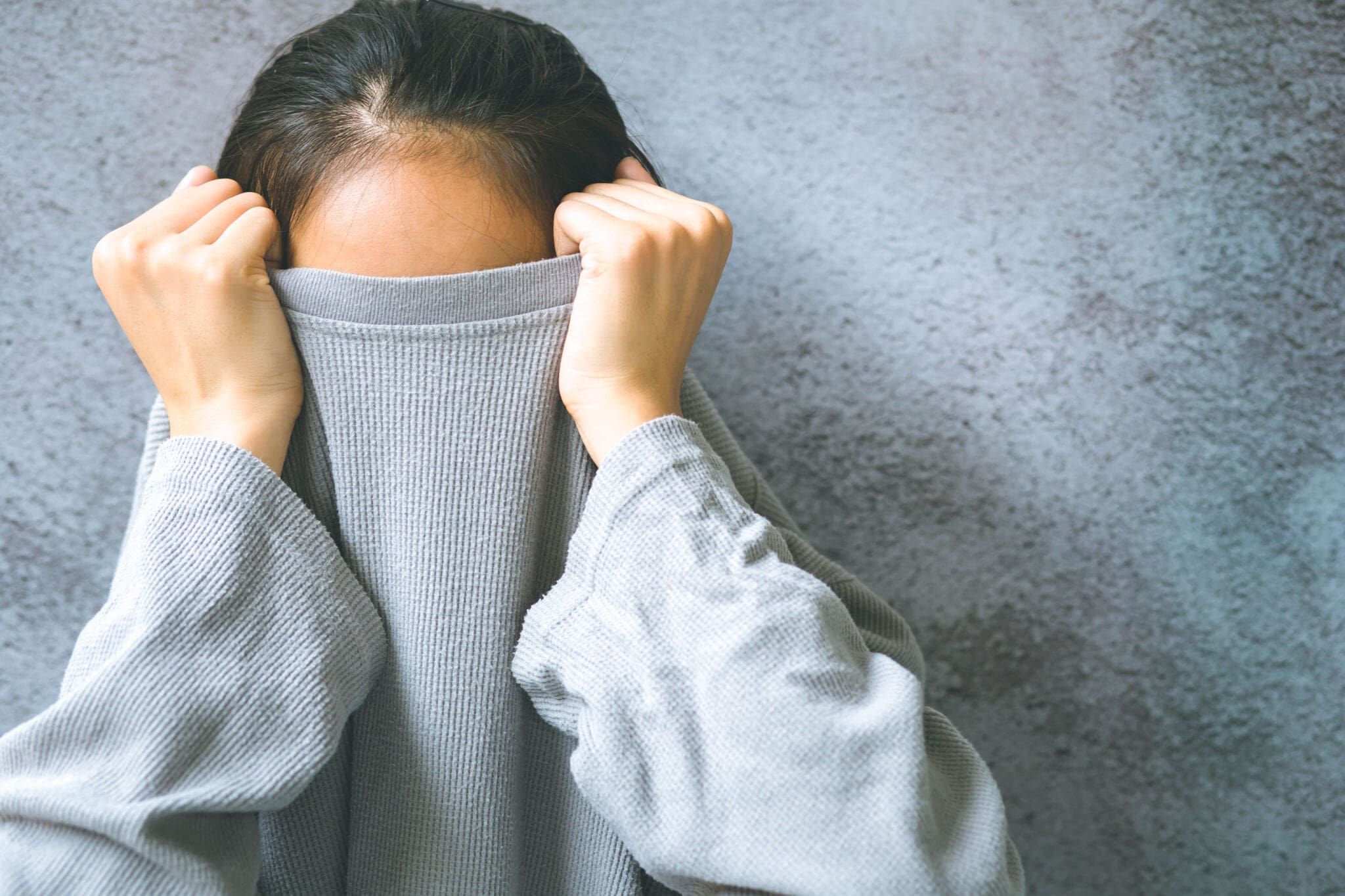In this article
What are Chemical Burns?
Chemical burns occur when a harmful chemical comes into contact with your skin, eyes or the inside of your body and damages the tissue. Harmful chemicals can cause tissue damage very quickly, and in some cases, the damage can be severe.
Harmful chemicals could include:
- Bleach
- Cleaning products, such as toilet cleaner, drain cleaner or oven cleaner
- Washing detergent
- Ammonia
- Industrial cleaners
- Laboratory chemicals, such as hydrochloric acid, lye and sulfuric acid
- Fertilisers
- Battery acid
- Paint stripper
- Pesticides
- Chemicals used in swimming pools
- Acetone
- Hair dyes
- Anti-freeze
- Wet cement
- Chemical warfare agents (e.g., those used in military settings)
Chemical burns can occur if you accidentally spill chemicals on your skin, chemicals splash or spray in your eyes, you inhale chemicals or if you accidentally swallow them. When these chemicals come into contact with your skin, eyes, mouth or internal organs, they destroy cells and cause tissue damage. Because chemicals can penetrate through the skin, the damage can be deep rather than superficial. Chemicals can be difficult to remove from your skin or eyes, meaning that even after the initial contact with the surface of your skin, they can continue to penetrate further and eat away at the deeper tissue.
Chemical burns can range in severity from mild to severe. Mild burns are superficial, usually only affecting the top layer of the skin and typically causing no long-term damage. Moderate chemical burns, also known as partial-thickness burns, go deeper than superficial burns and cause blistering. Severe chemical burns, also known as full-thickness burns, destroy all the skin layers and sometimes the tissue underneath. Severe burns can cause permanent tissue damage, mobility issues, scarring, permanent disfigurement or even death.
Some areas of the body are more vulnerable to chemical burns than others, specifically the hands, face, eyes, genitals and joints. Chemical burns to these areas can significantly affect functionality and the person may be at higher risk of disfigurement or loss of mobility.
How to Treat a Chemical Burn
Chemical burns can be extremely serious and require immediate medical attention. Because chemical burns can cause severe tissue damage, it may not always be immediately apparent how serious the tissue damage is. If you or someone else receives a chemical burn, it is, therefore, essential to ring 999 as quickly as possible.
While you are waiting for the paramedics to arrive, you should try and remove the source of the chemical burn to prevent any further exposure. However, it is essential to ensure that no other part of your skin is exposed to the chemical. For example, make sure you wear gloves before touching your skin or the chemical.
You should very carefully remove any clothing or jewellery that has also been exposed to the chemicals. If the chemical is on clothes, it is better to cut the clothing off your body, particularly for tight clothing (e.g., leggings), because you could accidentally expose other parts of your body to the chemical if you drag it across your skin.
If the chemical is dry (e.g., fertiliser), carefully brush it off your skin. However, for both wet and dry chemicals, it is important not to try and wipe the chemical, as this could spread the chemical to more areas and cause more burns. For both wet and dry chemicals, run the affected area of your skin under cool or lukewarm water until paramedics arrive. It is important not to scrub the area or use any soap or other products, just use running water only. It is important to make sure the running water does not touch any other areas of your skin as this could spread the chemical to a bigger area of the skin.
If the chemical has entered the eye, call 999 and flush the eye immediately with cool water. Try to keep your eyelids open while flushing the water so the chemicals can escape out of the eye.
If a chemical has been swallowed, drinking water can help dilute the chemical and reduce the severity of the damage. It is important to NOT try and force yourself to vomit, as this could re-expose your oesophagus and throat to the chemicals.
HOWEVER, the exception to the above advice is chemicals that are known to react with water, such as dry lime or elemental metals, which should NOT be rinsed under water. These chemicals might react with water and generate heat, which can significantly worsen the burn.
When you get to the hospital, a doctor will examine the burn, specifically looking at how deep it is, the size, how the tissue has been affected and other characteristics of the injury before confirming it is a chemical burn. To determine the severity of the burn, the doctor may also perform a blood test, which can determine whether chemicals have been absorbed into the blood stream and whether the function of any of your organs (e.g., your kidneys, liver or lungs) has been affected.
If the chemical has been ingested (swallowed), you may also require an upper endoscopy. An endoscopy is done with an endoscope, which is a long, thin tube that is inserted in your mouth and down your throat and can assess for any damage in your throat, oesophagus and stomach. This can check for any damaged tissue or holes in your oesophagus or stomach. If your eyes have been exposed to chemicals, you may also need a detailed eye exam to check for burns, damaged tissue, swelling or vision loss.
The type of treatment that is required for chemical burns depends on where the burn is and how severe it is. Treatment could include:
- Antibiotics (to treat or prevent infection)
- Intravenous (IV) fluids
- Painkillers
- Surgery to remove the damaged skin
- Surgery to repair any perforations in your oesophagus or stomach
- Reconstructive surgery (e.g., skin grafts) for severe burns
- Physiotherapy (for example, if the burn is on a joint and affects your movement)
Some chemicals, such as hydrofluoric acid, are absorbed through the skin and can enter the bloodstream. As well as a chemical burn, this can cause serious internal toxicity, even if the skin wound seems small. Internal toxicity can also occur if chemicals are inhaled and will require specialist treatment.

How Chemical Burns Happen
Chemical burns happen when a corrosive substance comes into contact with your body and damages tissues, most often the skin, eyes, mouth or lungs. The injury happens because the chemical reacts with your cells, breaking them down or disrupting their normal function.
Chemical burns can be caused by acids, such as hydrochloric acid or sulfuric acid, which break down the proteins and fats in your cells. Exposure to acid can cause coagulation necrosis, where the cells die but stay firm and maintain their original shape, which typically causes a layer of dead tissue to form. Chemical burns from acids are usually more localised but can be severe.
Chemical burns can also be caused by alkali chemicals, such as sodium hydroxide (found in many drain cleaners and manufacturing detergents), lye, ammonia and wet cement. Alkalis can saponify fats (break down the fat) and dissolve proteins in the skin into a soapy residue that causes the tissue to liquify and dissolve.
While chemical burns from acids typically involve the tissue forming a protective layer that prevents the chemical from penetrating any deeper, with an alkali burn, the tissue liquifies and allows the chemical to penetrate deeper into the tissue. Although not always the case, alkali chemicals cause more severe burns than acid chemicals. This is because alkalis can penetrate the tissue more deeply and cause deeper, more progressive tissue damage. Alkalis can also continue to damage your cells even after initial contact.
Some of the most common ways that chemical burns happen include:
Skin contact
This can happen when a chemical makes direct contact with your skin, for example, if you spill or splash a chemical on your skin, if you handle chemical substances without wearing gloves or if you touch a surface or object that has been contaminated by a chemical.
Eye exposure
Getting chemicals in your eyes can be particularly dangerous and can cause long-term damage to your eyesight. Eye exposure can happen if you splash or spray chemicals into your eyes (e.g., when pouring or spraying it from the bottle or container). Exposure can ALSO happen if you touch or rub your eyes using contaminated hands or gloves.
Inhalation
Breathing in chemical vapours or fumes, for example, from ammonia or chlorine, can cause burns in the nose, throat and lungs. Inhaling chemicals is more likely if you are working in an area without proper ventilation, if you aren’t wearing the correct PPE when working with chemicals (e.g., a mask or respirator), if chemicals are stored in direct sunlight or heat or if chemicals are mixed together, which can create dangerous fumes.
Ingestion
Swallowing a chemical substance can happen in the case of accidental poisonings and is most common in young children. Swallowing chemicals can severely damage the mouth, throat, oesophagus and stomach and cause organ damage.
Injection or penetration
Although much rarer, chemicals that are under high pressure can be injected into the skin (e.g., in industrial accidents). This could happen if the skin is accidentally punctured with a contaminated sharp object, such as a needle or broken glass, if high-pressure equipment, such as airless paint sprayers, grease guns or fuel injection apparatus (which deliver chemicals at extremely high pressure) force chemicals into the skin or because of accidental contact with pressurised liquid chemicals.

Who’s at Risk for Chemical Burns
Any person who handles chemicals is at risk of getting a chemical burn. This could include workers doing high-risk jobs, such as:
- Laboratory technicians and assistants.
- Plumbers
- Construction workers, particularly those who handle wet cement
- Factory workers
- Farmers and agricultural workers who are exposed to pesticides and fertilisers
- Mechanics (exposure to battery acid, solvents and anti-freeze)
- Hairdressers (exposure to chemicals in hair products, such as hair dye and perming products)
- Salon workers, such as nail technicians and facialists (exposure to chemicals such as acetone or chemical peels)
- Cleaning staff
- Pharmaceutical manufacturers
- Chemical transporters
It is also important not to underestimate the risks of household chemicals, such as the chemicals in cleaning products or laundry detergent. Household chemicals can be particularly dangerous to young children who may accidentally touch, play with or swallow chemicals such as bleach or laundry detergent. Household chemicals can also be dangerous to other vulnerable groups, such as the elderly, who may have slower reflexes and poorer vision and people who have impaired sensation or mobility.
What are the Symptoms of Chemical Burns?
The symptoms of chemical burns can differ depending on the severity of the burn. The most common symptoms of chemical burns on the skin are:
- Blisters or scabs on the affected skin
- Blackened skin
- Unusually cracked, peeling or dry skin
- Pain
- Numbness
- Redness or other skin discolouration
- Swelling
- Irritation or burning
Remember, not all chemical burns hurt straight away. Some chemicals numb the skin, for example, phenol or cause delayed pain, so you might not realise how bad the burn is until later. The longer a chemical stays on the skin, the deeper the damage will be, so it is important to act quickly, even if you don’t feel much pain or the symptoms of the burn seem mild.
The most common symptoms of chemical burns in the eyes are:
- Swollen eyelid
- Pain
- Itchiness
- Stinging or burning
- Blurred vision
- Watering eyes
- Being unable to see (vision loss)
- Being unable to keep your eyes open
- Feeling like something is in your eye
- Extreme sensitivity to light
- Red or discoloured eyes
Eye burns are especially dangerous as the eyes are so delicate and chemical exposure can cause permanent vision loss quickly.
The most common symptoms of chemical burns from swallowing chemicals are:
- Chest pain
- Pain in your mouth or throat
- Pain when swallowing or being unable to swallow
- Difficulties speaking
- Coughing
- Excessive saliva and drooling
- Nausea and vomiting
- Shortness of breath and other breathing difficulties
- Swelling in your airway
- Vomiting (sometimes with blood)
Ingesting chemicals can also result in perforations in your stomach or your oesophagus. A stomach perforation is a hole in the wall of your stomach that allows the contents of the stomach to leak into the abdominal cavity. A perforation in your oesophagus is a hole in the tube that carries food and liquids from your mouth to your stomach. This can allow the contents of the stomach to leak into the chest or abdomen. Perforations in the stomach or oesophagus can cause serious complications such as sepsis and can be potentially life-threatening.
Can Chemical Burns Be Prevented?
The best way to prevent chemical burns is to implement effective safety measures when handling any type of chemical. Safety measures could include:
- Store chemicals in secure, protective containers that are clearly labelled.
- Store incompatible substances separately, nowhere near each other.
- Read the Safety Data Sheet (SDS) before handling any chemical, focusing on what the risks of the chemical are, how the chemical can affect the skin, eyes or lungs, whether the chemical reacts with water or air and what the recommended first aid steps are in the event of an accident.
- Ensure liquid chemicals are kept in secondary containment, such as a spill tray or a dike, to contain any leaks.
- Wear personal protective equipment (PPE), such as chemical-resistant gloves, googles, face shields, long-sleeved clothing, chemical-resistant aprons, lab coats, masks, respirators and closed-toe shoes when handling chemicals.
- Keep all chemicals away from children (e.g., store them in locked places or out of reach of children).
- Avoid using strong chemicals where possible.
- Implement spill protocols in case of a chemical spill and have spill kits close by that are specific to the types of chemicals being handled.
It is also recommended that any workplaces that handle chemicals keep emergency equipment nearby. This could be an eyewash station, an emergency shower or a large sink. There should also be clear emergency procedures in place that all staff members are aware of. Anyone working with chemicals should also have training to ensure they know how to handle chemicals safely, the specific risks of the chemicals they are using and what to do in an emergency.

Complications of Chemical Burns
Although some chemical burns are minor and cause no long-term issues, more serious chemical burns can have serious short-term and long-term complications. The risk of complications can depend on the type of chemical, how much of the chemical you have been exposed to, what area of your body has been affected and how severe the burn is.
Complications could include short-term complications such as tissue damage. Because chemical burns affect cells, skin, fat and even layers of muscle can be destroyed when exposed to harmful chemicals. This can be extremely painful, although the affected person may not initially feel pain as the chemicals may numb the area or they may be in shock. Shock, usually caused by large burns, can be serious and can lead to fluid loss, low blood pressure and organ failure if untreated.
Chemical burns can also lead to long-term complications, such as
- Scarring and disfigurement
- Permanent skin discolouration
- Permanent damage to the bones or joints, which can affect movement
- Chronic pain
- Permanent sensitivity to heat, cold or sunlight
- Perforated stomach or oesophagus
- Permanently narrowed oesophagus (as a result of scarring)
- Permanent vision loss
- Organ damage (e.g., in the case of a chemical that is absorbed through the skin and can permanently affect the liver, kidneys or central nervous system)
- Hypocalcaemia (low calcium levels) from hydrofluoric acid burns that permanently disrupt calcium levels.
- Skin cancer or cancer of the stomach or oesophagus
- Long-term psychological impact, such as anxiety, depression or post-traumatic stress disorder (PTSD), particularly if the event was traumatic or if you are left with permanent scarring, disfigurement or pain.
Although chemical burns only make up about 4% of all burn injuries, up to 30% of deaths from burns are due to chemical burns. This shows the potential seriousness of chemical burns. Long-term complications and life-threatening injuries are more likely if you do not follow the recommended first aid steps and if medical attention is not immediately sought.






